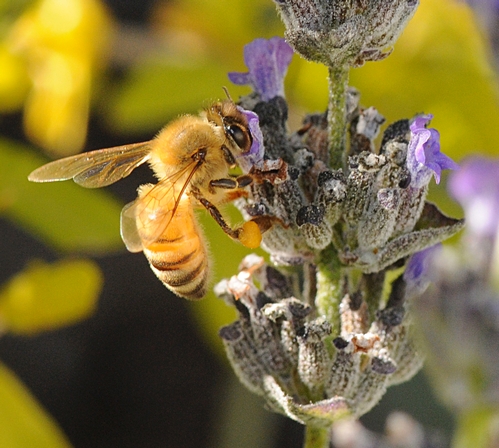Nov 25, 2009
I slipped into the back yard today to see how many honey bees were nectaring the lavender, one of the few plants still blooming.
A few here. A few there.
That's when I saw her.
A bee the color of pure gold. And she was carrying a load of pollen that was equally pure gold.
The bee? An Italian. A very blond Italian.
Folks at the Harry H. Laidlaw Jr. Honey Bee Research Facility at UC Davis like to tease bee breeder-geneticist Susan Cobey, Laidlaw manager, about her "dislike" of the Italians (Apis mellifera ligustica). They know she doesn't "dislike" any bees--she just prefers the Carniolan bees (Apis mellifera carnica), a darker bee with a more sunny disposition. ("Sue's bees are polite," a member of the California State Apiary Board once said.)
Italians (originating from Italy) and Carniolans (from Slovenia) are common subspecies of the European or Western honey bee, Apis mellifera, which arrived here in America in the 1600s with the European colonists.
No matter the color, every honey bee is to agriculture what security is to Fort Knox.
Precious.
Attached Images:

Golden Bee

Whirling Bee

Golden Pollen